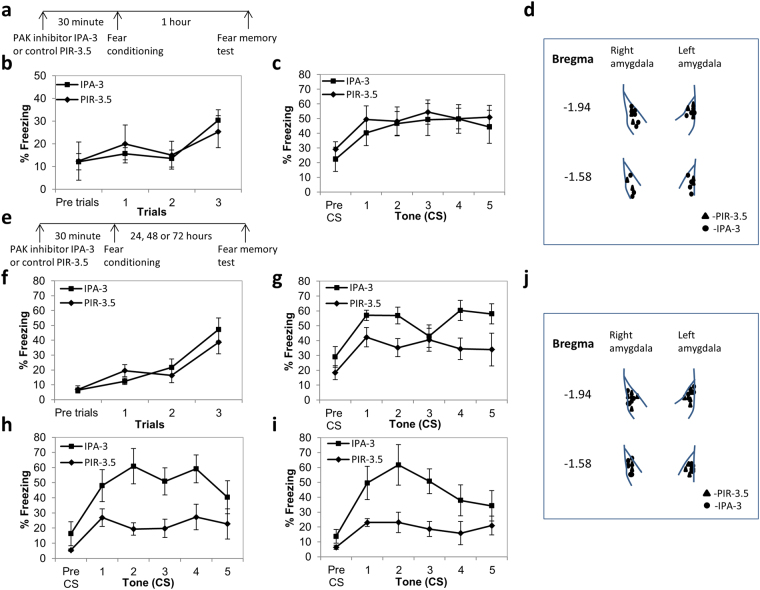Figure 4.
Inhibition of PAK activity in LA enhanced long-term, but not short-term, fear conditioning memory. (a) Schematic description of the short-term memory (STM) fear conditioning behavioral protocol. (b) Freezing during training was not different in animals to be tested for STM and microinjected with IPA-3 30 minutes before fear conditioning when compared to PIR-3.5 injected mice (F(1,19) = 0.002, p > 0.9). (c) Microinjection of IPA-3 into LA 30 minutes before fear conditioning (n = 12) had no significant effect on fear memory compared to PIR-3.5 microinjected controls (n = 9) when tested 1 hr after training (F(1,19) = 0.138, p > 0.7). (d) Cannulas placement in animals that participated in the STM test. (e) Schematic description of the long-term memory (LTM) fear conditioning behavioral protocol. (f) Freezing during training was not different in animals to be tested for LTM and microinjected with IPA-3 30 minutes before fear conditioning when compared to PIR-3.5 injected mice (F(1,14) = 0.089, p > 0.7). (g) Microinjection of IPA-3 into LA 30 minutes before fear conditioning enhanced fear memory compared to PIR-3.5 microinjected controls when tested 24 hrs after training (F(1,14) = 4.885, p < 0.05) (n = 8 each). (h) Fear conditioning was enhanced in mice injected with IPA-3 into LA 30 minutes before training (n = 5) and tested 48 hrs after training when compared to PIR-3.5 microinjected mice (n = 6) (F(1,9) = 7.674, p < 0.03). (i) Fear conditioning was enhanced in mice injected with IPA-3 into LA 30 minutes before training (n = 5) and tested 72 hrs after training when compared to PIR-3.5 microinjected mice (n = 6) (F(1,9) = 6.812, p < 0.03). (j) Cannulas placement in animals that participated in the LTM test.

